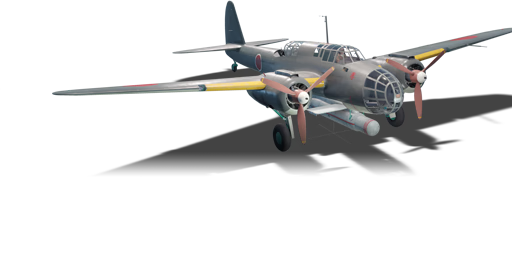


The Ki-48-II otsu is a premium gift Japanese frontline bomber. It was introduced during Update "Sons of Attila" as a reward for the 2023 Tokushu Heiki event.
The Ki-48 was an early-war Japanese light bomber, and was used successfully in the war against China. It was used to bomb critical supply lines and Chinese infrastructure during the land invasion of China. Pilots noted the plane for being fast enough to escape interception. The Ki-48-II otsu is currently the only propeller-driven aircraft than can carry a guided missile, the Ki-148, and serves as a very unique collectible from the Missile Workshop event. At its battle rating, the enemy tanks you will be facing have little armour, and the Ki-148's 130 kg of TNT warhead will make short work of enemy units. The enemy aircraft at this BR won't be much of a threat when the Ki-48 is in the hands of an experienced pilot. Its high speed allows it to run away from danger, and two gunners in the rear can help pick persistent fighters off of your six.
flaps
flaps
flaps
brake
| Belt | Belt filling | Armor penetration (mm) at a distance: | |||||
|---|---|---|---|---|---|---|---|
| 10 m | 100 m | 500 m | 1000 m | 1500 m | 2000 m | ||
| API-T/Ball/Ball | 8 | 8 | 6 | 3 | 2 | 0 | |
| AI/AP/AI/AP | 13 | 12 | 7 | 3 | 2 | 0 | |
| API-T/AI/API-T/AI | 8 | 8 | 6 | 3 | 2 | 0 | |
| Belt | Belt filling | Armor penetration (mm) at a distance: | |||||
|---|---|---|---|---|---|---|---|
| 10 m | 100 m | 500 m | 1000 m | 1500 m | 2000 m | ||
| AP-T/Ball/Ball/AP-I/AI | 9 | 8 | 6 | 3 | 0 | 0 | |
| AP/AP/AP/AP-T | 13 | 12 | 7 | 3 | 2 | 0 | |
| AP-I/AP-T/AP-I/AP-T | 9 | 8 | 6 | 3 | 0 | 0 | |







 2 x (35 / 75 / 150) %
2 x (35 / 75 / 150) % 
 2 x 112 %
2 x 112 % 

Flight performance | |
|---|---|
Survivability |
|---|
Weaponry | ||
|---|---|---|